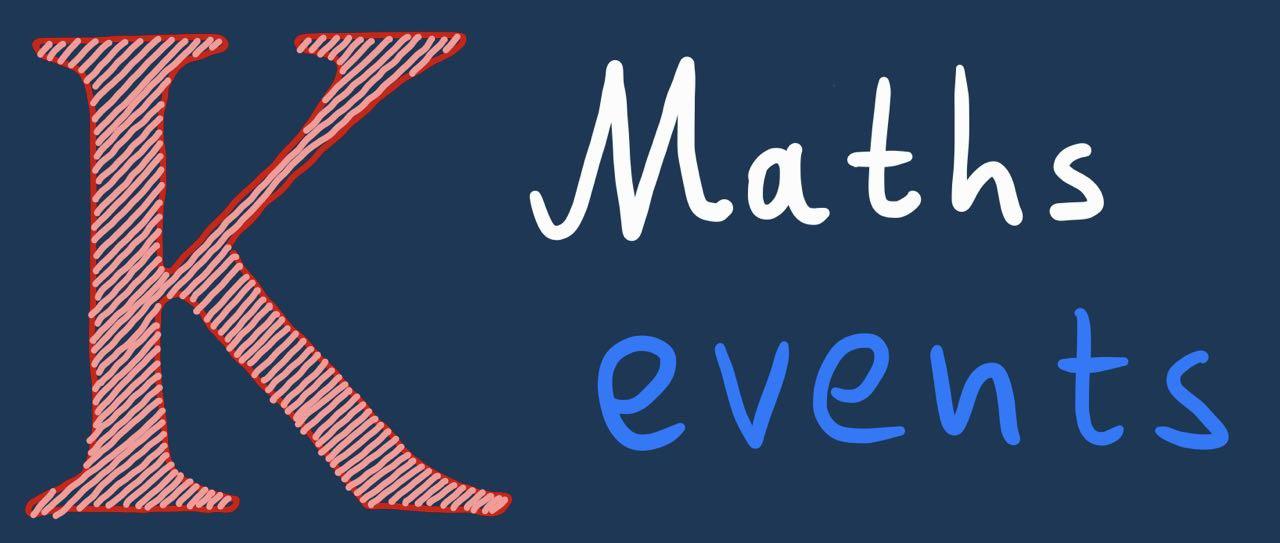Week 19.01.2025 – 25.01.2025
Monday (20 Jan)
TP Lonti: An introduction to the black hole information paradox (1/4)
Regular Seminar Tarek Anous (QMUL)
| at: 10:30 - 10:31 KCL Strand room: LIMS abstract: | This course will give a technical introduction to the black hole information paradox (BHIP). In the first lecture, we will begin with a review of quantum path integrals, both in Lorentzian and in Euclidean signature. We will review the Euclidean path integral connection with statistical mechanics and thermodynamics while also reviewing the derivation of the first law of thermodynamics in standard equilibrium statistical mechanics. We will then introduce the laws of black hole thermodynamics, and study them in particular examples. The second lecture will be devoted to the Unruh effect. We will study free quantum field theory in Rindler space, which, locally, is the spacetime observed by a uniformly accelerated observer. We will derive that this observer measures a temperature related to the observer proper acceleration. The third lecture will be devoted to classical and quantum information theory including notions of conditional probability, mutual information, and entropy inequalities, in settings with finite numbers of degrees of freedom. We will also introduce the Page curve and its significance. Finally, in the fourth lecture we will set up a toy model of the BHIP in Anti de Sitter space (AdS). Because AdS is believed to have a dual description as a conformal quantum field theory, we will use this duality to our advantage. We end with a broad discussion synthesizing what we have learned, and what is left to understand. Keywords: |
PR KCL Probability Seminar: Counting in random combinatorial structures
regular seminar Peter Allen (The London School of Economics)
| at: 14:00 - 15:00 KCL, Strand room: S-3.18 abstract: | Conlon and Gowers in 2016 described a general approach to proving sparse random analogues of extremal results in combinatorics, such as bounding the minimum and maximum number of triangles in any subgraph of G(n,p) with a given number of edges. The general part of this approach is a functional-analytic statement which, given a sparse setting, constructs a dense model. However there is a condition which must be shown to hold with high probability to apply the dense model theorem. In Conlon and Gowers' work, there is a technical difficulty with the probabilistic part which leads to a rather involved proof, which applies only in a restricted setting (for example, they can handle triangles but not triangles with a pendant edge), and with quite poor bounds on 'high probability'.
|
FM $\rho$-arbitrage and $\rho$-consistent pricing for star-shaped risk measures
regular seminar Nazem Khan (University of Oxford)
| at: 15:00 - 16:00 KCL, Strand room: s5.20 abstract: | We revisit mean-risk portfolio selection in a one-period financial market, where risk is quantified by a star-shaped risk measure $\rho$. We make three contributions. First, we introduce the new axiom of sensitivity to large expected losses and show that it is key to ensure the existence of optimal portfolios. Second, we give primal and dual characterisations of (strong) $\rho$-arbitrage. Finally, we use our conditions for the absence of (strong) $\rho$-arbitrage to explicitly derive the (strong) $\rho$-consistent price interval for an external financial contract. This is joint work with Martin Herdegen.
|
Tuesday (21 Jan)
GE Generalising Euler’s Tonnetz
regular seminar Konstanze Rietsch (KCL)
| at: 15:00 - 16:00 KCL, Strand room: S4.29 abstract: | Euler in 1739 wrote about a way to visualise harmonic relationships in music thus creating what is now called `Euler’s Tonnetz’. This talk is about Euler’s tonnetz from a modern point of view, and how to generalise it. Our ‘Tonnetze’ will take place on triangulated surfaces. We will, in particular, consider a set of examples that live on triangulations of tori and are related to crystallographic reflection groups, and a diatonic example related to a famous finite geometry. Keywords: |
Wednesday (22 Jan)
DS Tracer-bath correlations in d-dimensional interacting particle systems
regular seminar Davide Venturelli (Sorbonne Université, CNRS)
| at: 13:30 - 14:30 KCL, Strand room: S5.20 abstract: | When a tagged tracer particle diffuses in a bath of similar-sized particles, it locally perturbs the bath, leading to spatial correlations that can be generically long-ranged. Understanding these tracer-bath correlations offers a powerful tool for probing the tracer statistics in such strongly correlated systems — however, their analytical treatment remains challenging due to the complex many-body nature of the problem. Indeed, while these correlations have been recently characterized for the simple exclusion process in one spatial dimension [1], much less is known for higher dimensions (d > 1), and beyond simple lattice models.
|
TP From Categories to Cold Atoms: Phases of Matter from new Symmetries
Regular Seminar Sakura Schafer-Nameki (Oxford U.)
| at: 14:00 - 14:01 KCL Strand room: K3.11 abstract: | I will explain how the recent developments in so-called categorical or non-invertible symmetries can be used to make sharp predictions about phases -- gapped and gapless -- in the presence of such symmetries. This so-called a categorical Landau paradigm applied to 1+1d systems predicts new phases and phase transitions. In some instances these are extremely simple to implement in spin-chains and have a potential to be implemented in the very near future in cold atom systems Keywords: |
Thursday (23 Jan)
TP The boundary value problem approach to the simulation of porous materials’ stress state
regular seminar Natalya Vaysfeld (KCL)
| at: 11:00 - 12:00 KCL, Strand room: S5-20 abstract: | I will discuss the application of boundary value problem methodologies to solving poroelasticity problems. A significant portion of the discussion focuses on boundary value problems of elasticity for three-dimensional bodies of canonical shapes. Additionally, the report includes an analysis of a non-axisymmetric elasticity problem for a three-dimensional conical body. Keywords: poroelasticity, porous materials |
Friday (24 Jan)
TP JC: Marten Reehorst on Moments and saddles of heavy CFT correlators
journal club Marten Reehorst ()
| at: 13:15 - 14:30 KCL, Strand room: Norfolk Building 342N abstract:Keywords: | |
